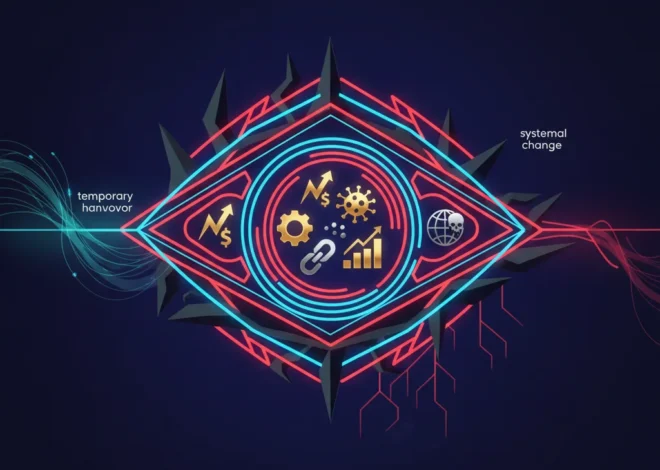
Gold’s Timeless Secret: The Ultimate Hedge Against Currency Debasement
In an era defined by rapid financial innovation, from sophisticated fintech platforms to the meteoric rise of cryptocurrencies, it’s easy to dismiss gold as a relic of a bygone era. Yet, despite the digital transformation of our economy, the ancient metal is experiencing a remarkable resurgence. Central banks are buying it at a historic pace, and savvy investors are increasingly allocating a portion of their portfolios to this tangible asset. Why? What is the enduring allure of this seemingly simple element in our complex modern world of finance?
The answer is both simple and profound, as highlighted in a succinct letter to the Financial Times: gold’s real attraction is that governments can’t debase it. This single characteristic—its immunity to the printing press—is the bedrock of its value and its timeless role as the ultimate protector of wealth. To truly understand why this matters, we must first delve into the nature of the money we use every day and the silent threat of currency debasement.
The Fragility of Fiat: Understanding Currency Debasement
For most of modern history, the money in our wallets has been “fiat currency.” Unlike the gold-backed currencies of the past, fiat money’s value is not derived from a physical commodity but from the trust and faith we place in the government that issues it. The U.S. dollar, the Euro, the Japanese Yen—all are fiat currencies. This system offers incredible flexibility, allowing central banks to manage the economy, stimulate growth, and respond to crises by adjusting the money supply.
However, this flexibility comes with a significant inherent risk: debasement. Currency debasement is the erosion of purchasing power that occurs when a government or central bank dramatically increases the money supply. While often conflated with inflation, debasement is the cause, and inflation is the effect. When more currency units are created out of thin air, each existing unit becomes worth less, silently stealing the value from your savings and investments.
History is replete with examples. The Roman Empire systematically reduced the silver content in its coins to fund its sprawling expenditures, leading to economic collapse. More recently, the aggressive money printing in response to the 2008 financial crisis and the COVID-19 pandemic saw central bank balance sheets swell to unprecedented levels. This policy, known as Quantitative Easing (QE), injected trillions of dollars into the global financial system, a necessary measure to prevent a depression, but one with long-term consequences for the value of money.
For individuals, business leaders, and investors, the implications are profound. The cash sitting in a banking account loses its ability to purchase goods and services over time. This forces capital into riskier assets on the stock market in a desperate search for returns that can outpace inflation, creating a precarious dependency on ever-rising asset prices.
Strategic Deployment: What a National Guard Presence in Chicago Teaches Us About Financial Fortitude
Gold: The Unprintable, Unhackable Store of Value
This is where gold enters the picture. Gold is the antithesis of fiat currency. Its value is not based on government decree but on its intrinsic physical properties, which have made it a trusted store of value for over 5,000 years.
- Finite Supply: The total amount of gold on Earth is limited. Unlike a central banker with a keyboard, no one can simply create more gold. Its supply grows slowly and predictably, at roughly 1.5-2% per year through mining—a stark contrast to the double-digit expansion of fiat money supplies.
- Durability: Gold is chemically inert. It doesn’t rust, tarnish, or decay. The gold mined by the ancient Egyptians is still with us today, a testament to its permanence.
- No Counterparty Risk: A physical ounce of gold is a direct asset. It is not someone else’s liability. A dollar in the bank is a claim on that bank; a stock is a claim on a company’s future earnings. Gold is beholden to no one, which makes it invaluable during times of systemic risk in the banking sector or stock market turmoil.
To better visualize the fundamental differences, consider the following comparison between gold and a typical fiat currency:
| Attribute | Gold | Fiat Currency (e.g., USD, EUR) |
|---|---|---|
| Issuance | Limited by nature; slow, costly mining | Unlimited; created by central banks at will |
| Backing | Physical properties and millennia of trust | Government decree (“full faith and credit”) |
| Counterparty Risk | None (if held physically) | Dependent on the stability of the issuing government and banking system |
| Historical Track Record | 5,000+ years as a store of value | Most fiat currencies have a limited lifespan and eventually fail |
| Control | Decentralized and globally recognized | Centralized and subject to political/economic policy |
The Modern Gold Rush: Why Central Banks Are Buying
It’s not just individual investors who are taking note. The most powerful players in the global economy—central banks—are accumulating gold at a breakneck pace. According to the World Gold Council, central banks added a staggering 1,037 tonnes to their reserves in 2023, the second-highest annual total on record. This follows an all-time high of 1,082 tonnes in 2022.
Why are the very institutions that manage fiat currencies stockpiling gold? Their motives are a clear signal for anyone involved in finance or investing:
- Diversification from the U.S. Dollar: For decades, the U.S. dollar has been the world’s primary reserve currency. However, many countries, particularly emerging economies, are seeking to reduce their dependence on the dollar to insulate themselves from U.S. monetary policy and geopolitical pressures.
- A Hedge Against Geopolitical Risk: In an increasingly fractured world, gold is a neutral asset that stands outside of national political systems. It provides stability when international relations are strained.
- Performance During Crisis: Central bankers know that gold has historically performed well during times of economic crisis, acting as a reliable store of value when other assets, including government bonds, are falling.
When the managers of the global financial system are hedging their own bets by buying a physical asset that cannot be printed, it’s a powerful statement about the long-term risks they see in the very system they oversee.
Navigating the Nuances: The Case Against Gold
Of course, no investment is without its drawbacks, and an authoritative discussion requires acknowledging the counterarguments. Critics correctly point out that gold is a non-productive asset. It doesn’t pay dividends like a stock or interest like a bond. In fact, holding physical gold can incur storage and insurance costs. Its price can also be volatile in the short term, driven by market sentiment and trading activity as much as by fundamentals.
Furthermore, proponents of modern economics argue that the flexibility of the fiat system is a feature, not a bug. The ability to expand the money supply, they contend, is what allowed governments to prevent a second Great Depression after 2008. A rigid gold standard, by this logic, would hamstring a government’s ability to fight recessions, leading to more severe and prolonged economic pain. A study from the National Bureau of Economic Research famously argued that the gold standard was a principal mechanism for the transmission of the Great Depression.
These points are valid. Gold is not a tool for generating income but a vehicle for preserving wealth. It is insurance, not a speculative growth play. Its role in a portfolio is not to replace stocks or bonds but to provide a bedrock of stability that is uncorrelated with the broader financial system.
From Pop Icon to Portfolio Risk: The Unseen Economics of Brand Beckham
The Future of Wealth Preservation in a Digital Age
The timeless tension between government-controlled fiat money and independent, hard assets like gold is more relevant today than ever. The continued expansion of government debt and the normalization of massive central bank balance sheets suggest that the pressures of currency debasement are not a temporary phenomenon but a structural feature of our modern economy.
At the same time, financial technology is transforming how we interact with this ancient asset. Innovations like gold-backed Exchange Traded Funds (ETFs) have made it incredibly easy for anyone with a brokerage account to invest in gold. More recently, blockchain technology has enabled the creation of digital tokens backed by physical, vaulted gold, combining the metal’s timeless stability with the efficiency of modern trading.
For investors, finance professionals, and business leaders, the takeaway is clear. Understanding the dynamics of currency and the role of hard assets is no longer an academic exercise—it is essential for long-term strategic planning and wealth preservation. The real attraction of gold remains what it has always been: in a world where digital promises can be broken and financial assets can be created with a keystroke, it is the tangible, unprintable, and enduring anchor of value.


